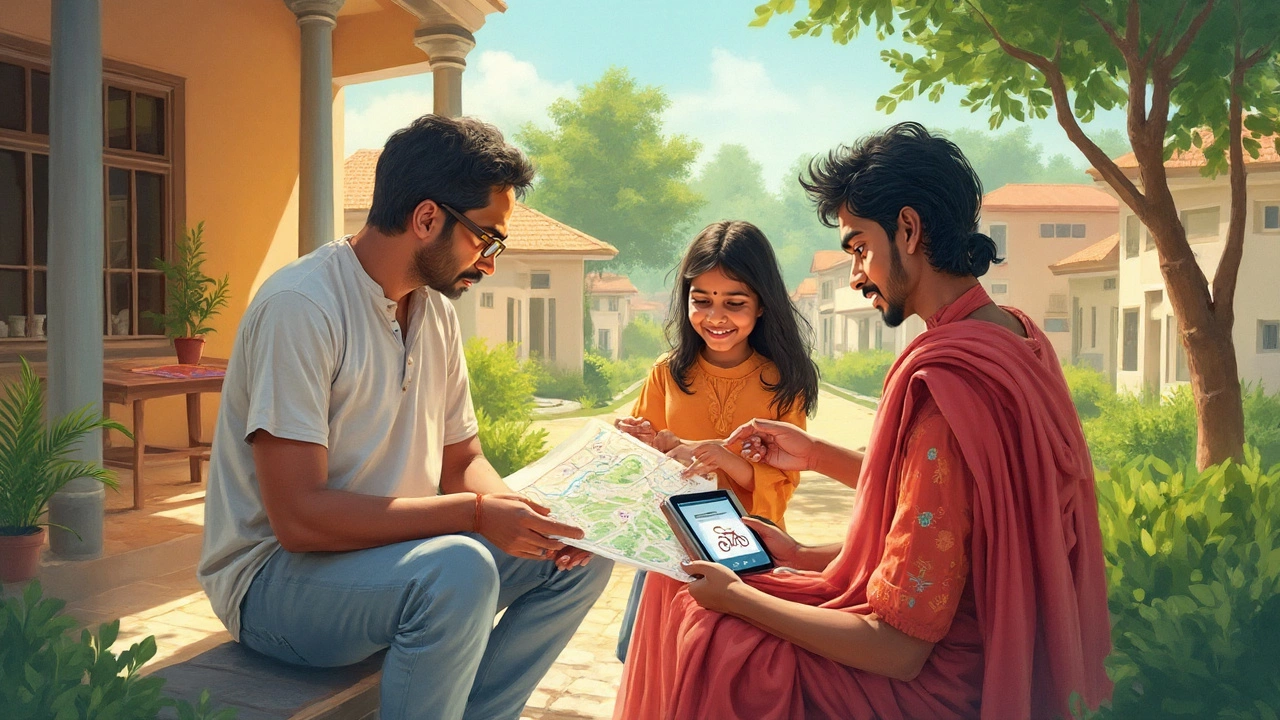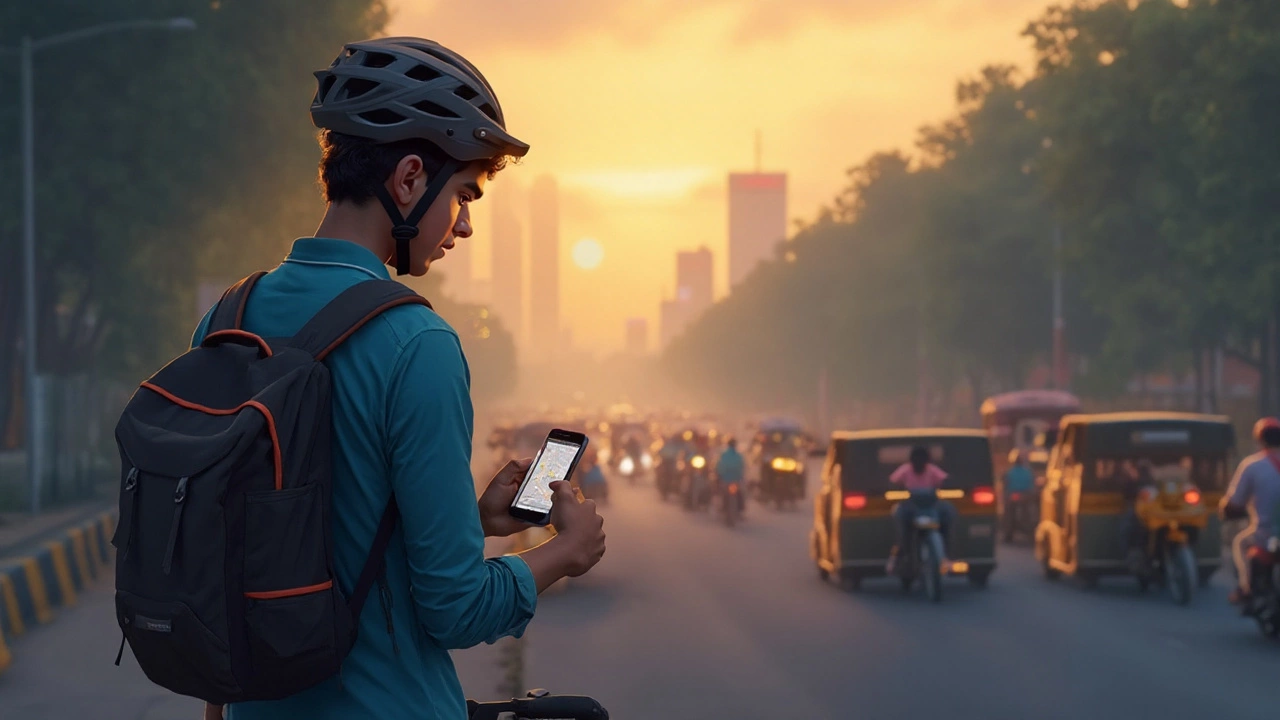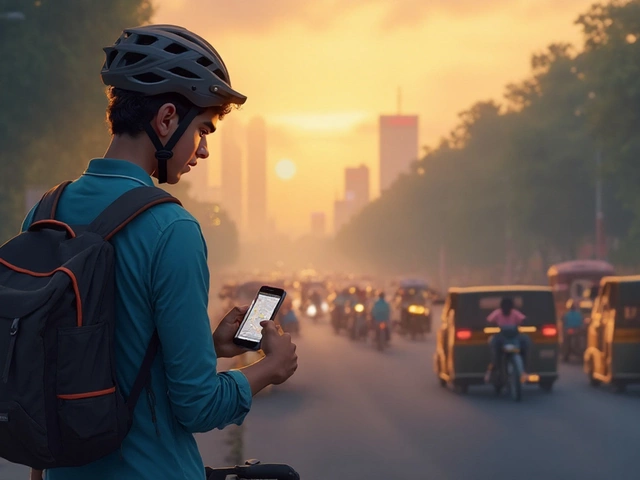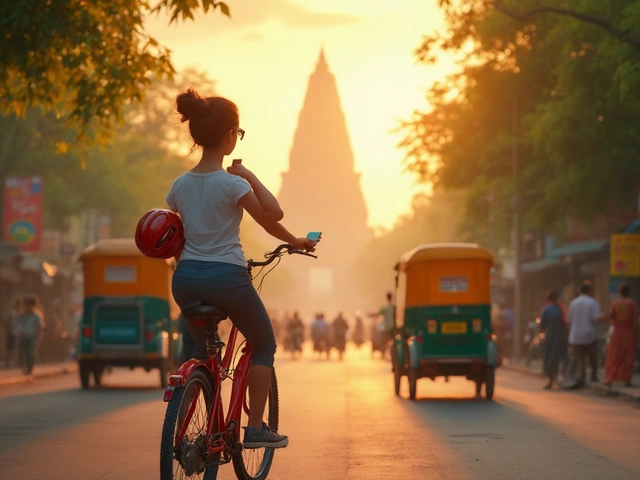Picture this—you’re all set for a breezy ride across the city, helmet on, shoes clipped, wind in your hair. You punch your destination into Google Maps and... wait. Where’s the bicycle option? Vanished. It pops up in some towns and countries but disappears in others like it never existed. That’s not just a random quirk; there’s a bunch of reasons under the hood. If you’ve ever felt the sting of being sent on a car-heavy highway by your favorite mapping app, you’re not alone. Let’s pull back the curtain and see what’s really going on with Google Maps and bikes.
Bicycle Navigation: Why You Won’t Always See It
The main frustration for millions of cyclists is the unpredictability. You might live in a neighborhood that’s perfect for pedal power—quiet streets, bike lanes, chill traffic—and yet, Google Maps can leave you guessing. The missing bike option often comes down to data. That’s right, Google Maps needs a mountain of updated, detailed info to sort out what’s rideable, safe, and open for bikes. In some places, cities keep excellent records of bike lanes, paths, and no-go zones. But in others, data is patchy, out of date, or just doesn’t exist in a digital format Google’s systems can use.
Here’s a wild detail: Google started rolling out bike directions back in 2010, but only for the US and a handful of countries. To get into more areas, Google partners with local city governments, volunteers, and mapping communities like OpenStreetMap. In tech-heavy cities like San Francisco, Seattle, Berlin, and Amsterdam, Google Maps is loaded with robust cycling data. Meanwhile, in smaller towns or rapidly changing cities, route info can lag behind reality—sometimes by years. Ever seen a bike lane get paved one month and show up on your phone the next? That’s rare magic, not the rule.
Legal issues are just as tricky. Laws about cycling vary wildly by country, state, or even street. In some places, cycling on certain roads is flat-out illegal—a no-go for both bikes and the apps that map them. Meanwhile, in the next block over, bikes could be treated like cars or have their own special lane. Google Maps has to bake all that in, plus details like one-way streets, construction zones, and weather hazards. If there’s even a bit of confusion, the app would rather hide the option than risk sending you somewhere sketchy. Google also fights with local governments about accuracy and takes the safe route—literally—when there’s any doubt.
Toss in the tech challenges, and it gets wild. Google’s algorithms balance dozens of factors: Are there bike racks at your start or endpoint? Does a recommended route cross a busy intersection? Is a section closed for repairs this week? Does it climb a 10% grade up a killer hill? This makes cycling far trickier to map than walking or driving, where data is more standardized and change happens at a snail’s pace compared to the jumpy, grassroots pace of urban cycling evolution.
How Google Maps Decides Who Gets Bike Routes
So, why do some users see a bicycle option and others don’t, even in the same city? Google uses what’s called "dynamic feature availability." Basically, if Google isn’t sure a route is safe or accurate (because of missing data, construction, or legal confusion), it hides the cycling feature for users in that region. It’s also based on your location, the places you’re routing between, and even the device you’re using. Android users sometimes get features before iPhone users due to rollout schedules.
Language and government support matter, too. In European cities where cycling is big business, government data feeds directly into Google’s servers—so updates and routing accuracy are much stronger. Some places only get a slice of those perks because of budget and bureaucracy. The city of Copenhagen, for example, actively works with Google Maps to update routes, add temporary detours during construction, and flag risky intersections.
Privacy is huge, too. Google famously collects anonymous data on movement to help predict traffic jams—but it has a far smaller pool of cycling data compared to driving. That’s why some lesser-used or off-road trails barely register, even though they’re known secrets for locals. It’s also why your reported cycling mishaps, route edits, or feedback take longer to reflect in the app, if they’re ever shown at all.
Another funny twist: The pandemic triggered a literal cycling boom in 2020-2022, and with that came new bike lanes, pop-up greenways, and shared spaces. But cities launched these at record speed, skipping the paperwork, and many locations focused on "temporary" fixes. Google could only reliably map what was officially documented, and a lot of new lanes fell through the cracks or changed back months later. Cyclists got left out unless a passionate local flagged the lines or mapped the changes for inclusion in updates.

Is Google Maps the Best App for Cycling?
If you’re relying on Google Maps for dedicated bike planning, you’re not alone—but you also might be missing out. Google Maps is powerful, but it’s built for the masses and optimizes traffic patterns for cars first, then walking, then public transit. Bikes are still an afterthought, despite the growing number of riders. For urban commuters, Google Maps is good at avoiding monster hills or mega-busy roads, but it often recommends the most direct route, whether it’s pleasant on a bike or not.
This is where other apps sometimes do a better job. Komoot, Strava, Ride with GPS, and Bikemap all specialize in cycling, offering everything from elevation profiles to smart notifications about construction or washed-out trails. These apps rely on active cycling communities for updates—so if someone rides a trail, marks a pothole, or posts a photo of a new bike rack, the info often shows up instantly for everyone. Google, by contrast, is slower to adapt because changes need to be verified and cross-checked at scale to avoid getting sued or misleading users.
Don’t get me wrong, the convenience of having everything in one spot is unbeatable. Google Maps nails integration with transit schedules, street views, and even real-time traffic. In some cities, you can even see upcoming bike-sharing docks and availability. But cyclists know this: The app can leave you dangling if you chase a shortcut down a flight of stairs or onto a highway off-ramp you’re supposed to avoid.
If you’re serious about cycling, here’s a pro tip—always compare routes from multiple apps. Many seasoned riders will first run Google Maps for a general idea, then double-check with Komoot or Strava for trail intel, construction, and surface conditions. Some apps let you upload your favorite rides to Google Maps as custom layers, so you can plot your safe bets without relying on Google’s best guesses.
Take advantage of community feedback, too. Platforms like OpenStreetMap let anyone update or add routes, making it a living, breathing map. A lot of regional cycling clubs and Facebook groups exist just to update map routes and flag new hazards or detours. If you’re a city explorer, following these groups is often faster than waiting for Google’s map updates.
Getting The Most Out of Google Maps When You're On Two Wheels
So, what should you do if Google Maps doesn’t show the bicycle route you’re hoping for? Don’t panic or give up on riding. There are a few easy tricks to get around the roadblocks. First up: If the cycling option doesn’t appear, try "walking" mode and mentally add a few minutes per mile for a typical bike pace. Walking routes sometimes overlap with better bike routes, especially in parks or low-traffic areas.
Another hack is to drop pins at intermediate points along your journey—this tricks Maps into offering alternative routes, and occasionally triggers the cycling option if the main route was on a road not recognized for bikes. This can also help dodge big highways and keep you weaving through quieter back roads. Don’t forget you can add multiple stops, so if you know from experience a certain stretch is epic (or awful), customize the route yourself.
If you live in a city with good cycling infrastructure but Maps still doesn’t offer cycling routes, send feedback. Google pays attention to these nudges, especially if lots of people request the same location. Use the "Send Feedback" feature and describe exactly what’s missing. It takes time, but repeated requests add up. That's how new bike paths in cities like Toronto and Sydney ended up in Maps faster than expected.
For the ambitious, dive into OpenStreetMap and update your neighborhood’s bike infrastructure directly. Don’t worry, you don't need to be a tech whiz—uploading a GPS track or even a photo of a new lane can be enough. There are even apps that sync with your Google account so your updates reflect across your usual maps and navigation apps.
When all else fails, keep some basics in mind. Check city government sites for official cycling maps—they often have up-to-date PDFs or interactive tools showing every official lane, path, and crossing point. Save these to your phone for offline use. If you travel outside your home turf, look up regional cycling organizations; they’re packed with locals ready to point out hidden gems and up-to-date detours. Join a local cycling group, or jump into an online forum. A quick post about a missing lane or problem route might just get it mapped out for the next curious rider.
Remember, technology can only do so much. Nothing beats firsthand exploration, talking to fellow riders, and keeping your wits about you when you hit the road. Google Maps makes everyday navigation easier, but if you wish for the day it finally nails cycling directions for everyone, you’re in good company. Until then, keep pedaling, keep sharing your routes, and help build the kind of liveable, bike-friendly world more mapping apps—and cities—can celebrate.


